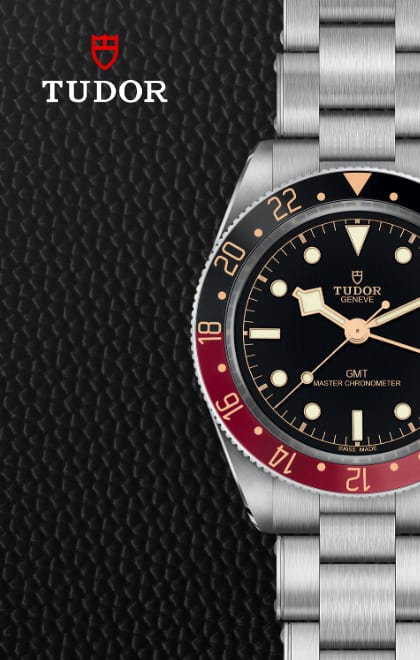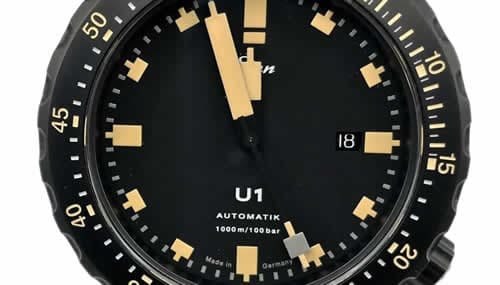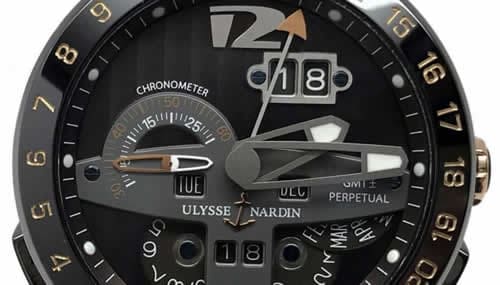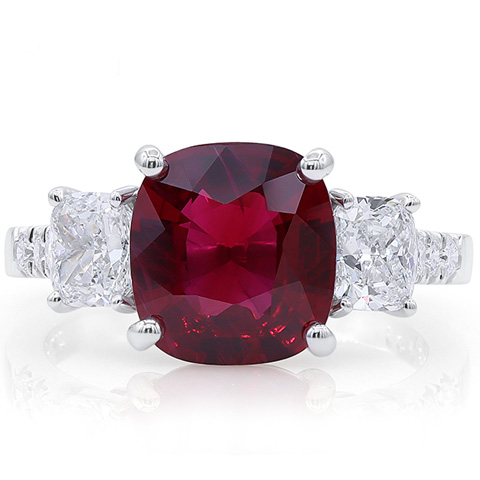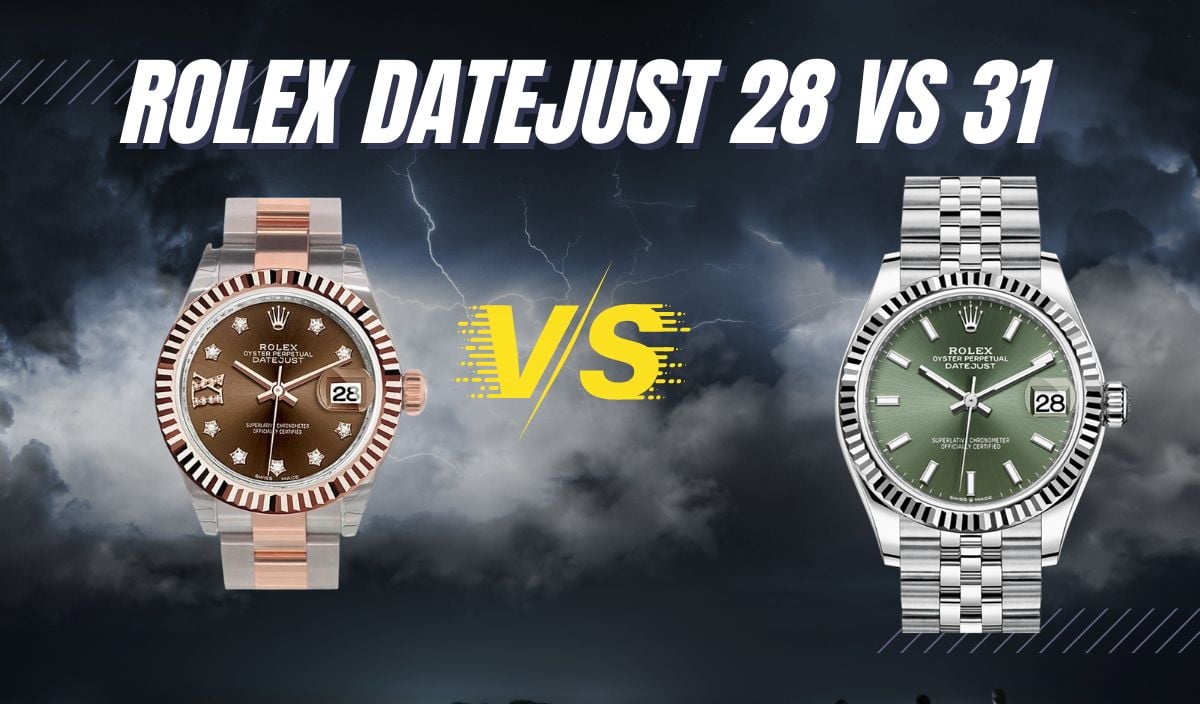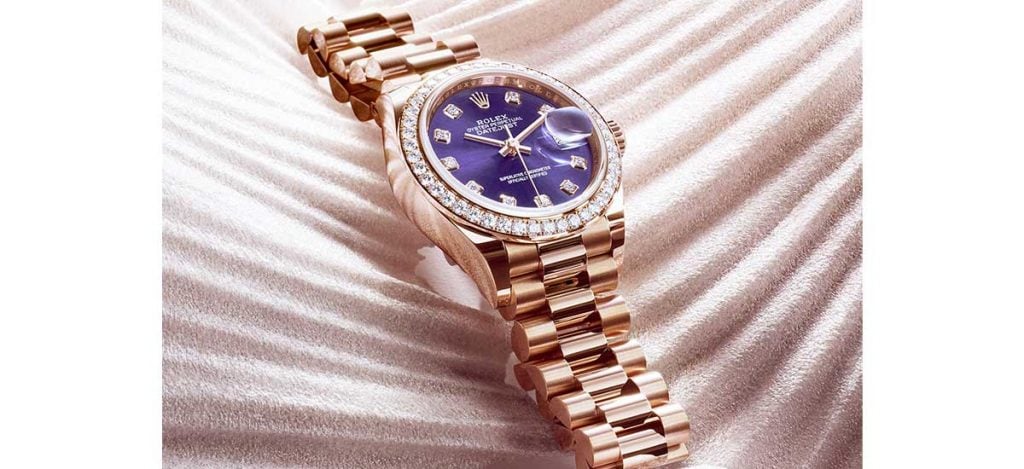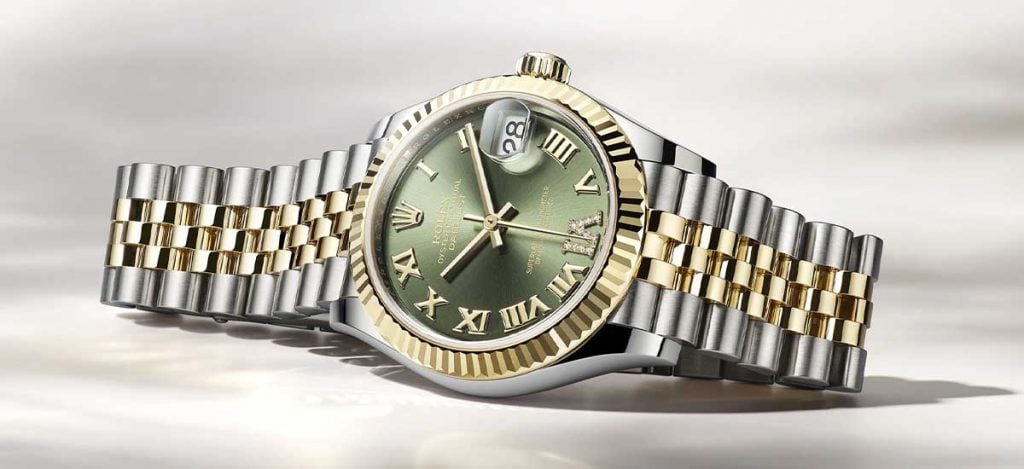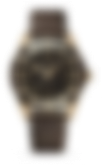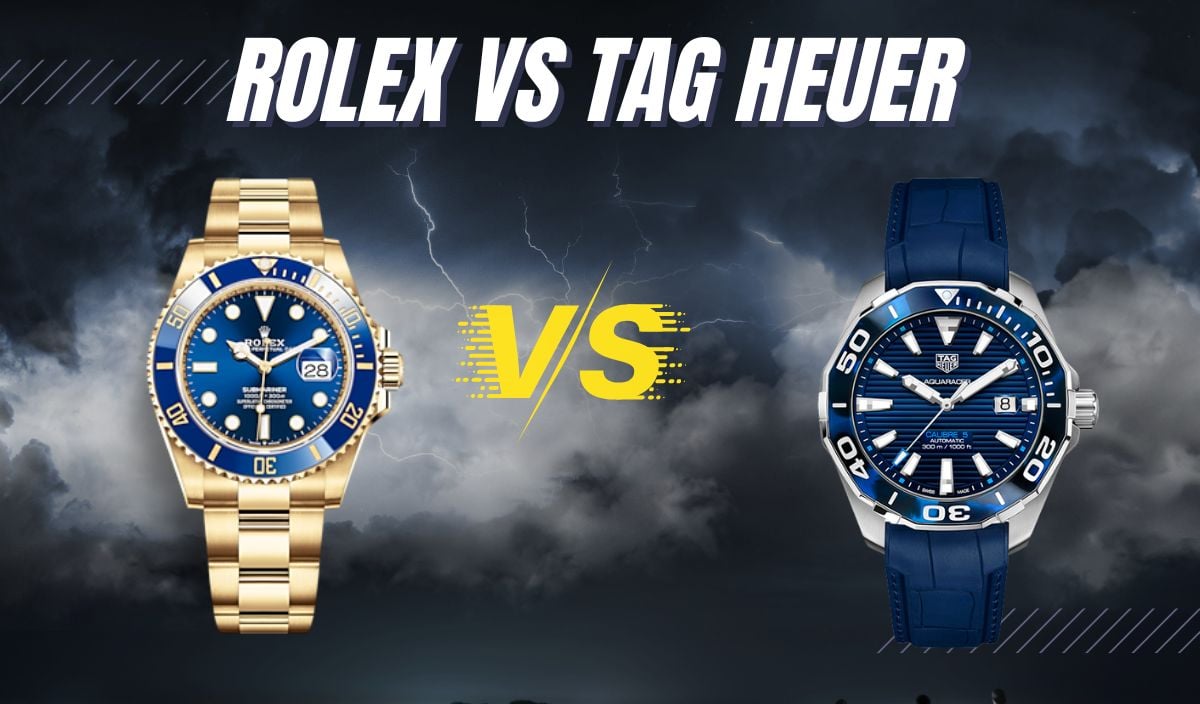
Say you want to compare Rolex with TAG Heuer broadly. It’s easy to write off TAG as no challenge quickly. But you’d be surprised to discover both brands’ equally rich history and influence in the horology world. These two watchmakers currently build watches for watch enthusiasts with different timepiece interests.
We get into the intricacies of both brands’ watch engines, popularity, and more. At the end of the road, you should have an idea which one of these brands suits you best or edges the other in your preferred category. Of course, there’ll be no Rolex or TAG Heuer slander, so we’ll get started with that rich history we talked about earlier without further ado.
Brand History
Rolex: Innovators From Get-Go
Rolex was established in 1905 by Swiss watch designers Hans Wilsdorf and Alfred David as Alfred and Davis. But here’s a historical plot twist you likely didn’t know: Rolex was based in London but moved down to Geneva because of high taxes on luxury products post World War I. As a result, they weren’t widely recognized as Rolex for nearly two decades when they were renamed to Rolex SA. Although their timepieces were already branded Rolex three years into the business.
But that’s enough brand name and chronological history class. Let’s talk patents and groundbreaking horology. Rolex released several never-before-seen complications and watches that transcend collector and enthusiast circles. They unveiled the first ever certified chronograph – the Daytona – only after five years in business.
Rolex released the first water-resistant watch ( the Oyster), the first self-winding watch (Oyster Perpetual), the first date and time watch (DateJust), and the first multiple time zone watch (GMT Master) within 50 years of business. Astonishingly, Rolex still produces most of these evergreen watches, which speaks volumes.
TAG Heuer: Trailblazers from The Genesis
A glimpse into Rolex history proves hard to top, but TAG Heuer (or Heuer) isn’t far off. They were founded in 1860 – five decades before Rolex – and originally named Heuer AG. It wasn’t until 1985 – during the quartz crisis –– that they were acquired by Techniques d’Avante Garde (TAG Group) and called TAG Heuer. They’re based in La Chaux-de-Fonds, Switzerland.
Before the 1985 takeover, Heuer released the first-ever dashboard chronograph, called Time of Trip, in 1958. And over a century ago, they patented the “oscillating pinion,” that we use in watches today. And in 1916, Charles-Auguste – the founder’s son – introduced the first ever stopwatch accurate to 1/100 of a second, The Mikrograph.
Surprisingly, Heuer only released their first wrist chronograph in 1914, so you can imagine they were trying to keep up with the competition, Rolex, for example. However, unlike Rolex, which still sells the line of iconic watches from its early days, TAG’s most iconic timepieces, like the Carrera and Monaco, are only later models. So it’s only logical to say that Rolexes have a richer history than any Heuer watch.
Brand Popularity
What if you had to compare brand popularity? Rolex would be the obvious winner based on the numbers. Enough data shows that Rolex is the #1 watchmaker in Switzerland and the world, while TAG Heuer is a distant #12 Swiss and #50 in world rankings. Despite this gap, TAG Heuer is a world-class watchmaker that you can’t write off as a luxury brand. Here’s a glimpse at both brands’ influence.
Rolex
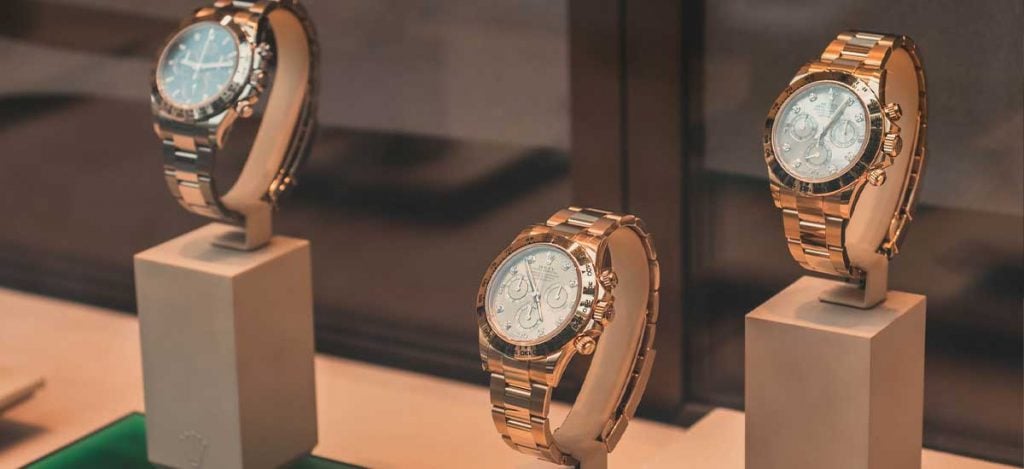
In reality, Rolex has gone beyond popularity as a watchmaker. Instead, they are researchers, innovators, explorers, and an awards laureate, in addition to their countless partnerships with business, arts, and sports legends.
As you already know, Rolex released many world’s first watches and movements in their early years. And they’ve publicized the strengths and capabilities of their timepieces boldly in scientific explorations and media. For instance, the Deep Sea Challenge was on both trips to the ocean’s deepest depths. And we’ve seen James Bond wear a Rolex Submariner or Chronograph, though not as much as an Omega Seamaster Ocean. But you get the drift. Rolex has and still is everywhere that matters, from pop culture to sports, to politics to space travel.
Although Rolex has millions of filthy rich “fanboys,” they have only 20 official brand ambassadors. Some of them are the recently retired 20x Grand Slam winner Roger Federer, Formula One icon Jackie Stewart, NBA hall of Famer Dwayne Wade, and his celebrated actress, activist, and wife, Gabrielle Union.
And in recent decades, the Paul Newman Rolex Daytona sold for $17.8 million at an auction, which had trickle-down effects on the brand’s popularity. Not only was Rolex on every watch enthusiast’s screen, but the general public. With this kind of influence, Rolex could stop marketing and still break profit, maybe even better.
“Every Rolex tells a story.”
TAG Heuer
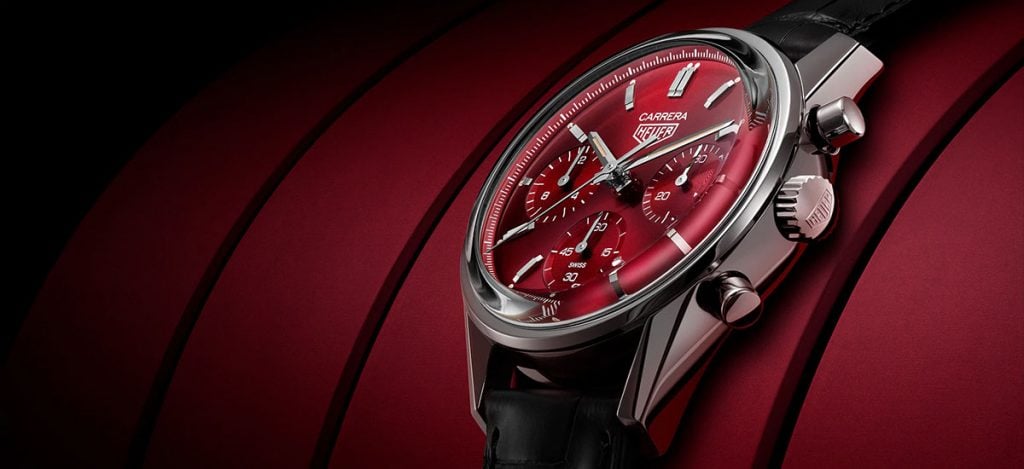
As a brand established in the 19th century, we know TAG has a rich history. And currently, as a brand under Louis Vuitton (LVMH), they’ve got some popularity too. But the journey to this point started when they supplied the automobile, aviation, and sailing industries with dashboard timers.
Then things kicked off extraordinarily for them in car racing from the 70s to the 90s, with help from TAG. Techniques d’Avant Garde – TAG Heuer’s parent company at the time – were co-owners of McClaren, who sponsored Williams Racing in Formula One.
Considering the long list of A-Listers who’ve pulled off a TAG Heuer as a dress watch, they’re a celebrity favorite. For example, we saw Timothy Dalton pull off a TAG Heuer Night Dive – rather briefly – in 1987’s Agent 007, The Living Daylights. Also, Men In Black and Fresh Prince of Bel-Air actor Will Smith almost always sports a TAG Heuer Monaco.
Many Rolex fanboys were also former TAG ambassadors like Tiger Woods, Roger Federer, Brad Pitt, and Leonardo DiCaprio, just to mention a few former ambassadors. Currently, TAG Heuer has Naomi Osaka, the 4x Grand Slam champion, Ryan Gosling from The Gray Man, and Patrick Dempsey as its official ambassadors.
And not to forget the influence of legendary race and film star Steve McQueen on TAG watches. TAG Heuer’s slogan is “Don’t Crack Under Pressure,” and they surely don’t, even with Rolex as a competitor.
Rolex vs. TAG Heuer: Brand Partnerships
As you probably know, this guide will be incomplete without comparing the partnership deals of these behemoth watch designers. How do they get the name out outside the watch industry?
I’ll start with the name you’ve likely seen plastered on a race car, TAG Heuer. This brand has been a frontrunner in the automobile industry since the 1900s, especially after releasing its Autavia dashboard clock. They partnered with Formula 1 in 1980 ( and they weren’t untouched by the Quartz crisis).
Rolex seems out of the league of TAG Heuer (or any watchmaker, for that matter) when you consider partnerships. They’re official timers for the most exclusive cabal of sports promotions and multinational corporations.
When you put that up against TAG Heuer’s most influential partnership being the official timekeeper of Formula 1, it’s totaling. But it’s a sublime collab that enshrines Heuer’s long history with car racing timepieces. And Rolex is more or less the apex luxury piece everyone aspires to wear when they become rich.
Brand Technology
Again, Rolex would outshine TAG when considering the tech for their movements, cases, and bracelets. Some of their least expensive lines are almost twice the cost of a Carrera (one of TAG’s high-end watches), so it’s unsurprising.
An Oyster Perpetual Date, Rolex’s entry-level watch costs around $3000 to $6000, while a TAG Autavia or Monaco starts from about $3,000. So comparing their tech is only about finding basic horology features like temperature resistance and anti-magnetic protection (for mechanical watches). Traditionally, Rolex has a watch line that handles each of these features.
The Rolex Milgauss, for instance, has magnetic protection of 1 gauss – which is overkill even in enthusiasts’ circles except for a handful of scientists and big-time collectors. So while TAG Heuer can’t match that spec in their watch lines, they can take on more magnetism than the average wearer will ever handle.
In a way, this is why Rolex stands out, aside from the fact that their watches mostly have precious metal finishing. Furthermore, Rolex has a complete educational website dedicated to watching explorations, arts, and awards. What you’ll get from TAG is mostly a list of partnerships and limited edition watches. With these few points, it’s safe to say they don’t stand a chance against Rolex.
But TAG Heuer can be considered better evolved technologically because they invest in classy smartwatches and NFTs. Meanwhile, Rolex has stuck to mechanical watches (good in horology) for over a century. For instance, the TAG Heuer Connected is a chronograph-style smartwatch that combines tech similar to an Apple Watch with elegant steel finishing and displays NFTs. That’s the height of modern technology you’ll see from any luxury watch.
Accuracy
Accuracy is rarely contemplated except by the most passionate enthusiasts, but it’s worth mentioning. A watch is accurate by how fast it works when synchronized to Coordinated Universal Time (UTC). For example, it could be 2 seconds fast or –4 seconds slower than UTC.
One more thing is rate stability. This is how accurate the watch measures over a while, and it’s equally, if not the most crucial feature to test a watch’s accuracy. And how do Rolex and TAG Heuer watches compare after a month, year, or five years? Well, if you consider the fact that TAG Heuer produces quartz movements – the world’s most accurate timekeeper – and Rolex only makes mechanical movements, TAG is the clear winner.
On the mechanical movement playing ground, you’ll quickly see Rolex’s unfair advanTAGe. And even TAG Heuer acknowledges it. While we can’t accurately quantify how accurate Rolex watches are (every watch varies how it’s used), they’re certified by Contrôle Officiel Suisse des Chronomètres (COSC), which certifies a chronograph to be accurate between –4 and +6 seconds a day.
From a traditional horology standpoint, it can’t get any better than this. But Rolex goes even further with an in-house test that certifies their watches as Superlative Chronometers that keep time to -2/+2 seconds a day.
TAG Heuer, on the other hand, can’t afford the fancy certifications and R&D teams, which they’ve admitted helps them to keep costs down. In fact, they claimed that their watches are as accurate as any COSC-certified model, which makes sense.
We aren’t sure of the costs to obtain a certification, but it’s much easier for Rolex to incorporate COSC certificates and research spending in their pricing. So if it makes sense, you can get a TAG Heuer that’s just as accurate as a Rolex, even if it’s $4,000 cheaper. But Rolex is officially the better timekeeper.
Comparable TAG Heuer and Rolex Watches
The Rolex Submariner and the TAG Heuer Aquaracer are iconic dive watches critics and enthusiasts have compared. We’ll have a brief look at the features of both timepieces for an insight into how they build their watches.
The most obvious place to start is how deep they can go underwater. Here, the Aquaracer wins, capable of depths up to 500m, while the Rolex has 300m water resistance. But the Submariner trumps the Aquaracer with luminescence in the dark, higher resale value, and a robust build from its stainless steel and precious metal strap options.
The TAG Heuer Aquaracer is mainly only sold in rubber straps, stainless steel, and bands like NATO fabric. However, they have many more dial and case options than the Rolex. On average, an entry-level Rolex Submariner costs around $8,000, while an Aquaracer could sell for around $2000.
Ultimately, you’ll find that unless you’re scuba diving into the Mariana trench, you can thrash either watch in water, and they’ll be perfectly alright. But the Submariner is a more valuable piece (although there are also a few priced limited edition. Aquaracers)
Some Other possible Comparable Rolex and TAG Heuer Watches
Dress Watches
Oyster Perpetual vs. Link or Carrera Monaco
Chronographs
Day-Date vs. Monaco or Autavia
Dive Watch
Submariner vs. Aquaracer
Racing Watch
Rolex Daytona vs. Formula 1 or Aquaracer Professional
Resale Value
Rolex is the king of resale value when it comes to luxury watches. Not just because they’re more expensive but also the brand name. And TAG Heuer isn’t beating that today. But resale value generally depends on the condition of the watch, casing, warranty, or status of the previous owner.
And they’ll factor in what you can get for a Rolex or TAG if you want to sell them pre-owned. But you have a better chance of getting close to what you spent on a Rolex than a TAG Heuer watch.
Warranty
TAG Heuer offers the industry-standard 2-year warranty period. But Rolex watches come with a 5-year warranty (a policy they started in 2015), but it is now a norm in ultra-luxury brand circles. While Rolex has a more extended warranty, both have excellent after-sale service in the US, so that won’t be an issue.
Frequently Asked Questions
No. TAG Heuer is not in any way related to Rolex other than the fact that they’re both swiss watchmakers.
It’s hard to say as opinions vary, depending on watch type and price points. But some of the few luxury watchmakers touted to make better watches than Rolex are A.Lange & Söhne, Jaeger-LeCoultre, Breguet, Philippe Patek, and Audemars Piguet. However, Rolex still has the best price value of any other watchmaker.
Absolutely. TAG Heuer is a Swiss luxury watch brand established in the 1800s.
Final Thoughts
While choosing between a Rolex and TAG Heuer all comes down to preference and budget, we can’t deny that Rolex is the better brand in this comparison. TAG Heuer is a world-class watchmaker, but Rolex plays on a different level.
You can’t go wrong with either if you’re interested in a famous luxury watchmaker. Rolex timepieces tell a story with robust cases and mindblowing complications, while TAG Heuer offers timeless and precise watches that turn heads just as much.


